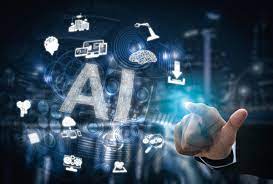Artificial intelligence is the talk of the town. Fans are promoting it as a way to achieve a swifter energy. Skeptics are pointing out its massive electricity demand. And some companies active in the wind, solar, and battery storage space are getting excited about possible deals—because these deals would save their bread and butter.
One of these already got lucky. French Neoen, which funds, develops, and operates wind and solar installations and battery storage arrays, is about to sell to Brookfield Asset Management, which offered some 6.1 billion euros for a 53.32% stake, equal to around $6.6 billion.
Brookfield is acting in partnership with Singapore’s Temasek Holdings and may well be viewed as a savior for the financially troubled wind, solar, and storage developer. The interest rate environment from the last two years has not been kind to wind, solar, and storage developers, and many have struggled to keep afloat, even among the majors such as Siemens Gamesa and Ørsted.
The deal comes at just the right time for Neoen, which reported an 8% decline in its revenues for the first quarter, attributing the decline to the entry into effect of new power purchase agreements. According to Reuters’ Yawen Chen, who analyzed the Brookfield offer recently, however, the French company is tackling a “strained balance sheet” while looking for ways to build the 20 GW of new capacity that it has in its pipeline until 2030. Chen suggests the target may be hard to hit—but Brookfield could help because it has the right motivation.
Days before the negotiations between the U.S. asset manager and the French wind and solar producer were taken up by the media, another report made headlines, this time involving Brookfield and Microsoft. The news: Brookfield and Microsoft had struck a deal for 10.8 GW of low-carbon electricity capacity that Brookfield will somehow “deliver” to the IT giant as part of the latter’s plans to eventually source 100% of the electricity it uses 100% of the time from low-carbon sources, either directly or indirectly.
The keyword above is “indirectly”, however, and it is this word that puts the partnership between Big Tech and various wind, solar, and storage players and backers in a new light that they don’t really like. What “indirectly” means here is that Microsoft does not aim to source 100% of the electricity it consumes from wind and solar, and from batteries attached to them. It may do so theoretically, but in reality, powering data centers with battery-stored electricity and wind- and solar-generated electricity around the clock would require such massive investments it could sink the company.
So, what Microsoft—and the rest of Big Tech—will actually be doing is what they are already doing, which is buying renewable energy credits from wind, solar, and battery developers and passing these as tokens of low-carbon electricity generation. According to Chen, the advancement of artificial intelligence technology will spur an M&A spree in the wind, solar, and battery space because Microsoft is very much not the only one with big green plans.
This is probably a very likely development. Brookfield is certainly not buying Neoen for its balance sheet but for its capacity and its pipeline. It is buying it to profit from the stable and robust demand for renewable energy credits that Neoen and other wind and solar developers get awarded for every MWh of electricity that their solar and wind installations generate. And there will be more like Brookfield.
There may be a problem with the capacity-for-credits scheme. That problem was recently brought to light by the employees of the Science Based Targets initiative, who decried a decision by the entity’s management to recognize carbon credits as a means of corporate emission reduction. The reason those employees decried the decision was growing and spreading suspicions that with carbon credits available so readily, few companies would, in fact, put any effort into actually cutting their literal carbon dioxide emissions.
The conundrum is especially tangled for Big Tech because of its AI ambitions. Some have tried to pass artificial intelligence as one more driver of the energy transition, but with the amounts of energy it consumes, one cannot help but wonder if there is a point to using AI to advance the transition if the use would involve a surge in energy demand that would be so sharp it would require an increase in hydrocarbon generation capacity.
The debate over the use of carbon credits as a tool for indirect emission reduction is a heated one in the transition community. There are prominent backers, such as John Kerry, but there are also vocal opponents, such as virtually every climate activist. While the debate rages on, however, asset managers are taking the opportunity to bet on carbon credits, through acquisitions such as the Neoen one.
Yes, those wind and solar installations will be producing some electricity when the weather is right. But their new owners will be making the real money from the renewable energy credits that go with the power generated from such installations—and there will be demand for those as the AI era unfolds.

 Iran Energy News Oil, Gas, Petrochemical and Energy Field Specialized Channel
Iran Energy News Oil, Gas, Petrochemical and Energy Field Specialized Channel



